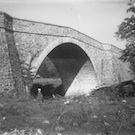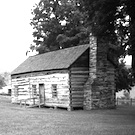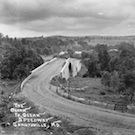The "Water Budget"
The “water budget” phrase is being thrown around quite casually (in 2015/2016) as if we all know what we’re talking about. Do we truly understand the meaning of a water budget and the kind of work it entails to develop one?
A water budget is being touted as the solution to allocate equitably the water resource of Deep Creek Lake to its various stakeholders. This is in lieu of using a specified upper and lower rule bands to define the maximum and minimum lake levels during the year.
Goal 12 of the DCWMP provides an excellent description of the issues, and the task is outlined as Objective 1, Strategy 1 on p. 37.
I have personally wrestled with this effort for some time now and focussed on what I thought it should entail, but I don’t get a good feeling that the issue is properly resolved or understood by those who champion it.
I have gone back to the progress reports that the lake level subcommittee of the DCWMP effort issued in order to get a better understanding of the arguments [2, 5]. It appears that the arguments focussed on the TERs, the Temperature Enhancement Releases (cold water for the fish), that these were managed incorrectly, causing less water to be available for controlling the water level of the lake.
I agree with the subcommittee reports that the TER methodology is unreliable. I wrote an extensive technical note on this in early 2014, pointing out that the TER methodology is crude and unreliable [6], and, at that time, did a a fair amount of research on alternative approaches.
Since the whole argument of the need for a water budget was driven by the erroneous predictions by the TER methodology, I believe that we’re better served with a new TER forecasting tool for the water temperature at the Sang Run bridge, and see where it takes us, something DNR and MDE does not seem to be willing to do.
The whole TER issue will be described elsewhere on this website; here the focus is on a potential water budget, or rather a water allocation, methodology.
Below is an outline of a possible approach for developing a water allocation scheme for Deep Creek Lake. This is, from a mathematics perspective, an optimization problem, that is, given how much and at what time water comes into the lake, what is the best way to apportion the amount of water to the various stakeholders.
The inputs are:
- Direct rainfall on the lake
- Direct runoff, including from stormwater management systems
- Streams
- Groundwater base flow, including springs at the bottom of the lake
The outputs or losses from the lake are:
- Scheduled releases through the hydro-electric generator station
- Discretionary and Rule Band releases
- Wicket gate leakage and bypass (what are wicket gates?)
- Groundwater loss around the dam area
- Evaporation
- Water for Wisp, ASCI, and Thousand Acres
- Other water losses?
The constraints imposed on releasing water through the turbines are as follows (according to the current, 2011, permit):
- The lake cannot get fuller than a level of 2462 ft.
- The hydroelectric facility cannot discharge more than 630 cfs
- The lake level cannot fall below 2457 ft during the months of May-September
- The water temperature at Sang Run bridge cannot go above 25 C during the months of June-August
- The flow rate at Hoyes should always be greater than 40 cfs during the months of June-August
- The white-water needs are as expressed in the permit
- The maximum amount of water that can be discharged by the power plant is as per permit
- The maximum amount of water permitted for Wisp, ASCI, and Thousand Acres
It is entirely possible that not all of these constraints can be satisfied on every day. Hence, each of these constraints must come with a plan B. For example, suppose that the 25 C limit is the only one that could not be met, but that 26 C could for that one day. Would that be acceptable? Or, by going to a lake level of 2456.8 ft all other constraints could be satisfied, would that be acceptable? This analysis requires some thought.
An optimization or minimization problem requires an objective function. One such function that is useful for the boating needs on the lake might be: “Ensure that the number of days of average water levels are greater than 2457 ft during the months of May-September”
Now, if I were a trout fishing guy, I might state the objective function as: “Make sure that the river temperature at Hoyes Run bridge is never above 25C”. Or if I were a white water enthusiast, I might want to state it as: “Make sure that there are white water releases for the day and time schedule specified in Table X.”
These ideas and their ramifications can be tested with historical data (2008-2013?). I believe that we have all the data, although not yet available on this website. What is needed are:
- Daily rainfall for the year
- The daily average lake level for the year
- The daily number of hours that the power plant has run during the year (from this a good estimate of a profile of all net available water could be reconstructed)
The basic software to do this is relatively simple. The difficulty is going to be in selecting the right optimization technique so that the process converges to acceptable solutions. There are many such methods, each designed to handle a certain class of problems. A few of those are listed under Resources below.
Resources:
- Many pertinent reports can be found on the document archives of the Deep Creek Watershed Management Plan work.
- One Dimensional Riverine Hydrodynamic and Water Quality Model (EPD-RIV1)
- DCL Watershed Management Plan
- A review of Goal Programming and its applications - Springer
- Computer Models for Water Resources Planning and Management
- Optimization of Reservoir Operation Using Cuckoo Search Algorithm: Example of Adiguzel Dam, Denizli, Turkey











